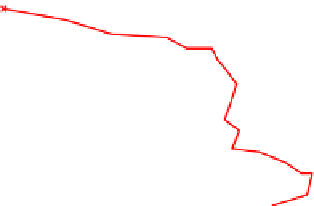Information Technology Reference
In-Depth Information
5.4
Robustness to Within-Class Variation
We identify the subspace that contains the undesirable within-class variation using
the eigen analysis method in Section 3. In particular, the subspace consists of top
100 dimensions, out of all the dimensions of the Gaussianized vectors, that are to be
suppressed in the calculation of the kernels.
5.5
Results
To keep the setting the same as in [5], we search each test image for the three best
bounding boxes, each affiliated with the quality function score. In particular, the
branch-and-bound search scheme is applied to each test image three times. After
each time, those features claimed by the found boxes are removed as discussed in
Section 4.1.
The ROC curves, characterizing precision vs. recall, are obtained by changing
the threshold on the quality function score for the found boxes. The equal error rate
(EER) equals 1
F-measure when precision equals recall.
The ROC curves and the EER are presented in Figure 2 and Figure 3 respectively.
We compare the results with a localization system using the same banch-and-bound
scheme, but based on the generic histogram of keywords with 1000 entry codebook
generated from SURF descriptors at different scales on a dense pixel grid [5].
−
70
histogram
G−32
G−64
G−128
G−128N
G−64N
G−32N
65
60
55
50
45
40
35
30
25
20
15
10
20
25
30
35
40
45
50
55
60
65
Precision(%)
Fig. 2
ROC curves for multi-scale car detection. (“G-n” denotes the result using n compo-
nents in the Gaussianized vector representation. The suffix “N” means the within-class nor-
malization. “Histogram” denotes the performance using the generic histogram-of-keywords
approach by Lampert et al.)



































































































































































































Search WWH ::

Custom Search